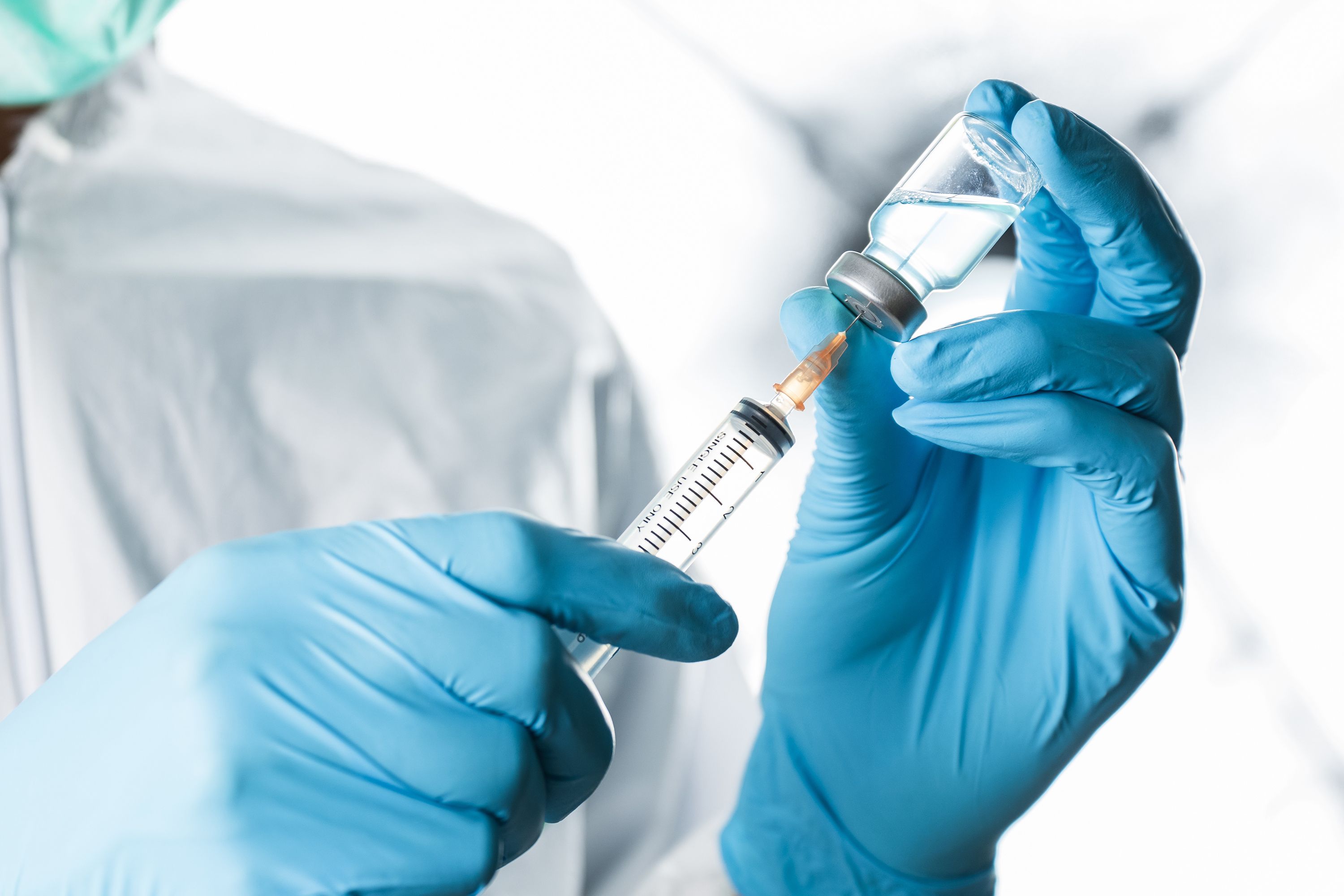News
Article
EMA Accepts Marketing Authorization Application for Mirvetuximab Soravtansine in FRα+, Platinum-Resistant Ovarian Cancer
Author(s):
The European Medicines Agency (EMA) has accepted a marketing authorization application seeking the approval of mirvetuximab soravtansine-gynx for the treatment of patients with folate receptor alpha–positive, platinum-resistant epithelial ovarian, fallopian tube, or primary peritoneal cancer.
This article was originally published by OncLive®. This version has been lightly edited.
The European Medicines Agency (EMA) has accepted a marketing authorization application (MAA) seeking the approval of mirvetuximab soravtansine-gynx (Elahere) for the treatment of patients with folate receptor alpha (FRα)–positive, platinum-resistant epithelial ovarian, fallopian tube, or primary peritoneal cancer.
The MAA was announced in an ImmunoGen news release1 and is supported by data from the phase 3 MIRASOL trial.2 Data presented at the 2023 ASCO Annual Meeting showed that patients treated with mirvetuximab soravtansine (n = 227) experienced a median progression-free survival (PFS) of 5.62 months (95% CI, 4.34-5.95) compared with 3.98 months (95% CI, 2.86-4.47) for patients given investigator’s choice of chemotherapy (n = 226) per investigator assessment (HR, 0.65; 95% CI, 0.52-0.81; P < .0001).2
The median overall survival (OS) for the mirvetuximab soravtansine arm was 16.46 months (95% CI, 14.46-24.57) vs 12.75 months (95% CI, 10.91-14.36) for the chemotherapy arm (HR, 0.67; 95% CI, 0.50-0.89; P = .0046).
"The acceptance of our MAA is another important regulatory milestone in the next chapter of ELAHERE’s story as we work diligently to deliver this new treatment option to patients with platinum-resistant ovarian cancer globally," Michael Vasconcelles, MD, executive vice president of research, development, and medical affairs at ImmunoGen, stated in the news release. "As the first novel medicine to have demonstrated an overall survival benefit in platinum-resistant ovarian cancer compared to chemotherapy in a Phase 3 clinical trial, we are pleased to initiate the review process that moves us one step closer to providing access to ELAHERE for eligible patients in Europe. We look forward to working closely with the EMA throughout the review process and to potentially bring this novel ADC [antibody-drug conjugate] to Europe as early as 2024."
Filling a syringe with IV drug | Image Credit: PhotobyTawat – stock.adobe.com

In November 2022, the FDA granted accelerated approval to mirvetuximab soravtansine for the treatment of adult patients with FRα-positive, platinum-resistant epithelial ovarian, fallopian tube, or primary peritoneal cancer who have received 1 to 3 prior systemic treatment regimens.3
The FDA’s decision was supported by data from the phase 3 SORAYA trial, which showed that patients with platinum-resistant, measurable disease who received at least 1 dose of the ADC experienced a confirmed overall response rate (ORR) of 31.7% (95% CI, 22.9%-41.6%) and a median duration of response (DOR) of 6.9 months (95% CI, 5.6-9.7).
The open-label, randomized, phase 3 MIRASOL trial serves as a confirmatory trial following the ADC’s accelerated approval from the FDA.4
The study enrolled patients with Frα-positive, high-grade serous, platinum-resistant ovarian cancer defined as having a platinum-free interval of at least 6 months. Patients were required to have FRα disease with a positivity staining intensity of at least 2 among at least 75% of viable tumor cells per immunohistochemistry. One to 3 prior lines of therapy were required, prior treatment with bevacizumab and a PARP inhibitor was allowed, and patients with BRCA mutations were permitted to enroll.
Patients were randomly assigned 1:1 to received 6 mg/kg of mirvetuximab soravtansine once every 3 weeks or investigator’s choice of chemotherapy consisting of paclitaxel, pegylated liposomal doxorubicin (PLD), or topotecan. Stratification factors included chemotherapy choice of paclitaxel, PLD, or topotecan, as well as 1, 2, or 3 prior lines of therapy. Investigator-assessed PFS served as the trial’s primary end point. Secondary end points included ORR per investigator assessment, OS, patient-reported outcomes, DOR, safety, CA-125 response, and time to second progression.
Additional data showed that patients in the mirvetuximab soravtansine arm achieved an investigator-assessed ORR of 42% (95% CI, 35.8%-49.0%) compared with 16% (95% CI, 11.4%-21.4%) for those in the chemotherapy arm. In the experimental arm, the complete response rate was 5%, and the partial response (PR), stable disease (SD), progressive disease (PD), and not evaluable (NE) rates were 37%, 38%, 14%, and 6%, respectively. In the chemotherapy arm, the rates of PR, SD, PD, and NE were 16%, 40%, 27%, and 16%, respectively.
A blinded independent central review (BICR) assessment showed that patients treated with mirvetuximab soravtansine achieved a median PFS of 5.9 months (95% CI, 4.9-7.0) vs 4.3 months (95% CI, 3.5-5.0) for those given chemotherapy (HR, 0.72; 95% CI, 0.56-0.92; P = .0082). The BICR-assessed ORRs were 36% (95% CI, 30%-43%) and 15% (95% CI, 10%-20%), respectively.
Regarding safety, 96% of patients in the mirvetuximab soravtansine arm and 94% of patients in the chemotherapy arm experienced any-grade treatment-emergent adverse effects (TEAEs). The rates of grade 3 or higher TEAEs were 42% and 54%, respectively. Serious AEs occurred in 24% of patients in the experimental arm and 33% of patients in the control arm. TEAEs led to deaths in 2 patients in each arm while on study drug or within 30 days of the last dose.
In the mirvetuximab soravtansine arm, TEAEs led to dose reductions, dose delays, and treatment discontinuation in 34%, 54%, and 9% of patients, respectively. Those rates were 24%, 54%, and 16%, respectively, in the chemotherapy arm.
References
- ImmunoGen announces European Medicines Agency Acceptance of marketing authorization application for mirvetuximab soravtansine in platinum-resistant ovarian cancer. News release. ImmunoGen. October 27, 2023. Accessed October 27, 2023. https://investor.immunogen.com/news-releases/news-release-details/immunogen-announces-european-medicines-agency-acceptance
- Moore KN, Angelergues A, Konecny GE, et al. Phase III MIRASOL (GOG 3045/ENGOT-ov55) study: Initial report of mirvetuximab soravtansine vs. investigator’s choice of chemotherapy in platinum-resistant, advanced high-grade epithelial ovarian, primary peritoneal or fallopian tube cancers with high folate receptor-alpha expression. J Clin Oncol. 2023;41(suppl 17):LBA5507. doi:10.1200/JCO.2023.41.17_suppl.LBA5507
- FDA grants accelerated approval to mirvetuximab soravtansine-gynx for FRα positive, platinum-resistant epithelial ovarian, fallopian tube, or peritoneal cancer. News release. FDA. November 14, 2022. Accessed October 27, 2023. https://www.fda.gov/drugs/resources-information-approved-drugs/fda-grants-accelerated-approval-mirvetuximab-soravtansine-gynx-fra-positive-platinum-resistant
- ImmunoGen announces FDA accelerated approval of Elahere (mirvetuximab soravtansine-gynx) for the treatment of platinum-resistant ovarian cancer. News release. ImmunoGen. November 14, 2022. Accessed October 27, 2023. https://investor.immunogen.com/news-releases/news-release-details/immunogen-announces-fda-accelerated-approval-elaheretm
2 Commerce Drive
Suite 100
Cranbury, NJ 08512
© 2025 MJH Life Sciences® and AJMC®.
All rights reserved.





